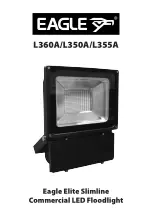
Page 9
Flametech Lite Assembly & Safety Instructions
JOINTS CLOSE TO EACH OTHER
When brazing joints that are close to each other you run the risk of when applying heat to the joint
being brazed, the joint adjacent to it re-melts. This can be avoided by using alloys with different
melting temperatures. E.g.: Silweld 40 range 640—7100C and Silweld 55 melting range 630—6600C.
FLAME SETTINGS
Even the most experienced engineer comes across a problem joint from time to time. Whether it be a
fracture in the joint or a braze alloy that does not flow as expected, problems do occur. Most
problems can be overcome by making a few adjustments in brazing technique or set up. There are
basically three types of flame settings that can be set when using an oxygen and acetylene mixture.
Neutral Flame
Equal amounts of oxygen and acetylene burning together in the flame.
Carburising Flame
Excess acetylene. The carburising flame appears to be more softer than the neutral and oxidising
flame. Excess acetylene in the flame assists in removing surface oxides from the copper tube. The
copper will appear bright rather than having dull or blackened surface due to an improper oxidizing
flame.
Oxidising Flame
Excess oxygen. Flame appears to be fierce compared to the other 2 flames. This flame should be
avoided.
First Choice Slightly Carburising Flame
Second Choice Neutral flame
Avoid oxidising flame
Содержание Flametech Lite
Страница 1: ...Flametech Lite Assembly and operating instructions ...
Страница 11: ...Page 11 ...






























